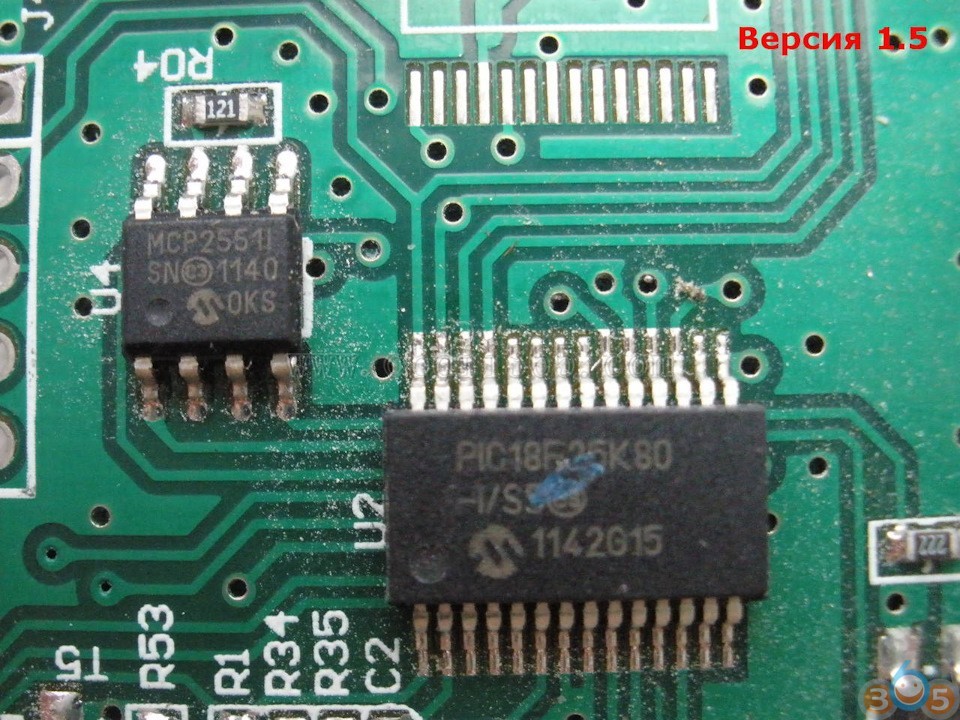For car enthusiasts and DIY mechanics, the ELM327 OBD2 adapter is an invaluable tool. These compact devices plug into your car’s OBD2 port and, when paired with software on your phone or laptop, allow you to read diagnostic trouble codes, monitor vehicle performance, and much more. However, when shopping for an ELM327 adapter, you’ll often encounter versions 1.5 and 2.1, leading to confusion about which one to choose.
The truth is, visually, there’s almost no difference between ELM327 v1.5 and v2.1 adapters. The distinctions lie beneath the surface, in their internal components and, most importantly, their firmware.
Understanding the Core Differences: Firmware and Functionality
The key differentiator between ELM327 v1.5 and v2.1 is the microcontroller and firmware they utilize. ELM327 version 2.1 emerged around 2014, primarily from Chinese manufacturers aiming to offer more affordable options. It’s crucial to understand that these version 2.1 adapters are independent developments and are not based on the original ELM327 design by Elmelectronics. Original ELM327 chips are significantly more expensive, making them less accessible for average consumers.
In contrast, ELM327 v1.5 (and its predecessor v1.4) are built upon “borrowed” or cloned firmware that closely mirrors the functionality of the original ELM327 code reader. While not officially licensed, version 1.5 adapters have generally been regarded as more reliable and compatible due to their closer adherence to the original design principles.
Version 2.1 adapters were developed and tested, seemingly, with popular diagnostic software like Torque and Scanmaster in mind. With these applications, they often function adequately, especially for basic OBDII protocol tasks. However, limitations arise due to incomplete or incorrect implementation of certain AT commands and potential instability in handling communication protocols beyond the most basic OBDII functions.
The compromises made in version 2.1, likely in pursuit of cost reduction and miniaturization, can lead to issues. Users may find that while the adapter connects to their diagnostic software, it might fail to establish a connection with the car’s computer (ECU) or provide incomplete or erratic data. This manifests as the software recognizing the adapter but failing to properly communicate with the vehicle for diagnostics or data retrieval.
Protocol Support: A Critical Consideration
One of the most significant drawbacks of the ELM327 v2.1 adapter is its limited or incomplete support for certain crucial OBD2 protocols, specifically ISO9141-2 and ISO14230-4 (KWP2000). These protocols are commonly used in older vehicles and certain car brands. In many instances, if your car relies on these protocols, an ELM327 v2.1 adapter will fail to establish communication with the ECU.
You can often identify protocol support issues by using AT commands. For example, sending the commands “ATIB10”, “ATAL”, and “ATSW00” to a v2.1 adapter might result in a question mark “?” response instead of the expected “OK” for “ATIB10” (which should also return the ELM327 version). This “question mark” response indicates a lack of support for non-standard protocols beyond basic OBDII.
Furthermore, if you need to manually input initialization strings to connect to your car’s ECU – a common requirement for older vehicles or certain aftermarket ECUs like January, Mikas, or Delphi found in some VAZ (Lada), Chery, Nissan, and Toyota JDM (Japanese Domestic Market) models – you will likely encounter connection problems with an ELM327 v2.1 adapter.
Which ELM327 Version Should You Choose?
Based on the differences outlined, here’s a practical guide to choosing between ELM327 v1.5 and v2.1:
Opt for ELM327 v1.5 if:
- You own a car manufactured before 2005.
- You drive a VAZ (Lada) or similar older vehicle.
- You intend to use specialized or less common diagnostic software.
- You anticipate needing to manually input initialization strings for ECU connection.
- You prioritize broader protocol compatibility and reliability, even at a slightly higher cost.
ELM327 v2.1 might suffice if:
- You have a relatively modern car, generally less than 10 years old.
- You plan to use only mainstream diagnostic apps like Torque or Scanmaster.
- You don’t require advanced diagnostics or protocol handling.
- Cost is a primary concern, and you are willing to accept potential limitations in compatibility.
In conclusion, while ELM327 v2.1 adapters offer a budget-friendly entry point into OBD2 diagnostics, ELM327 v1.5 remains the more versatile and reliable choice, particularly for users with older vehicles or those needing broader protocol support and compatibility with a wider range of diagnostic software and vehicle systems.
